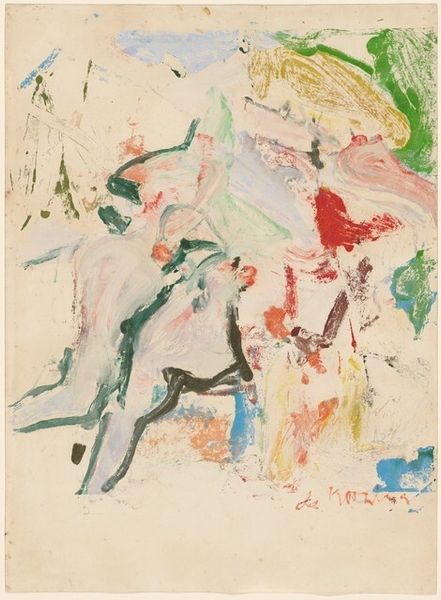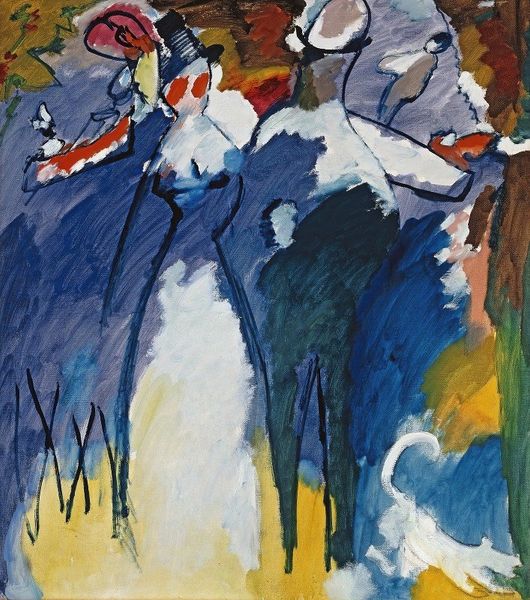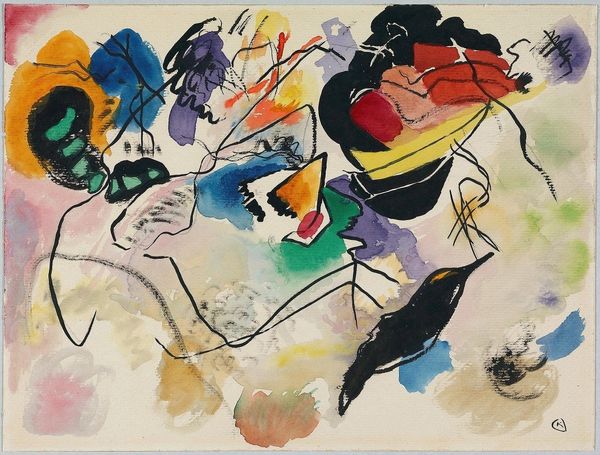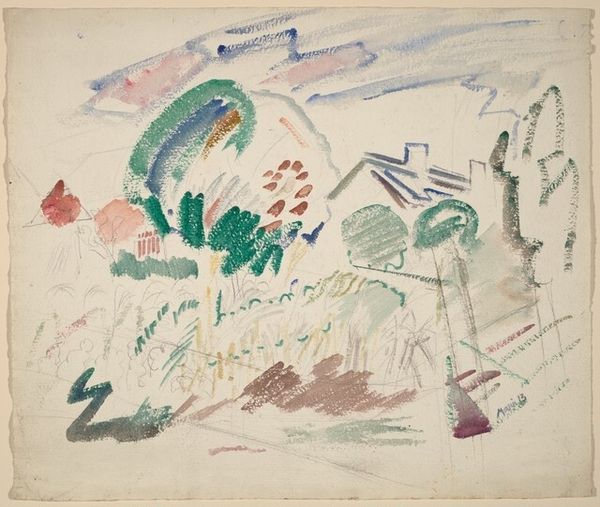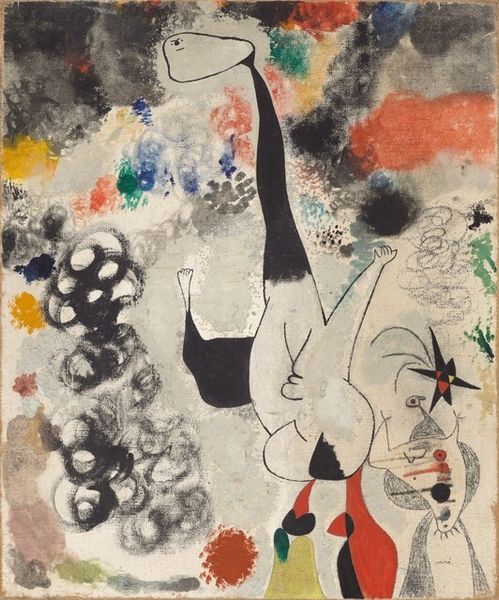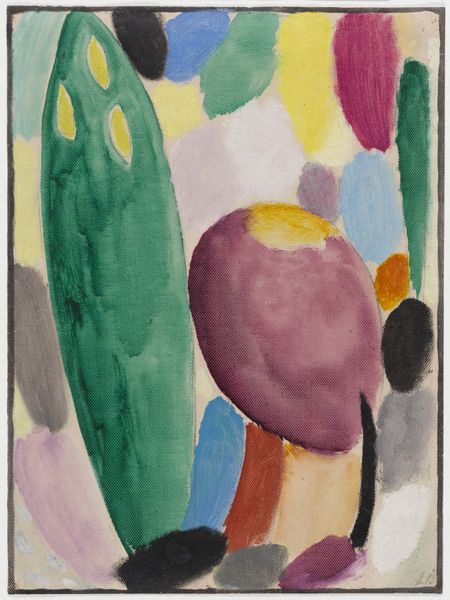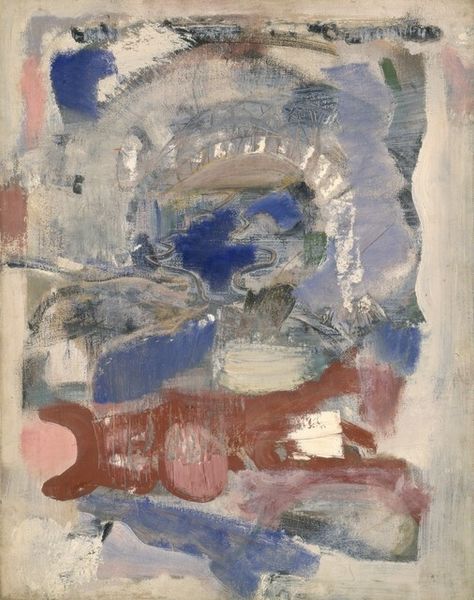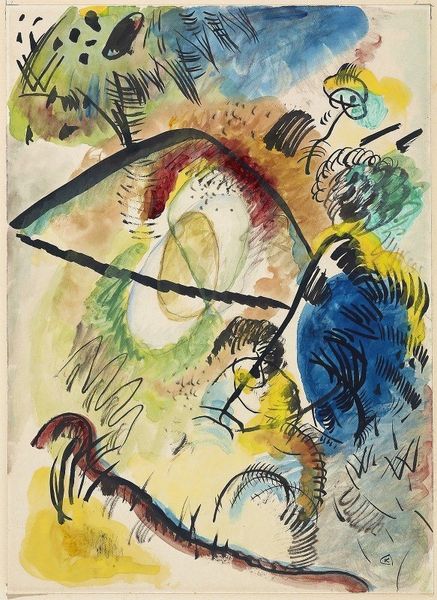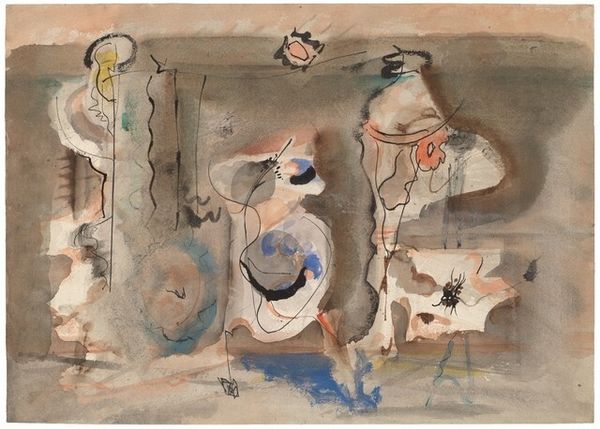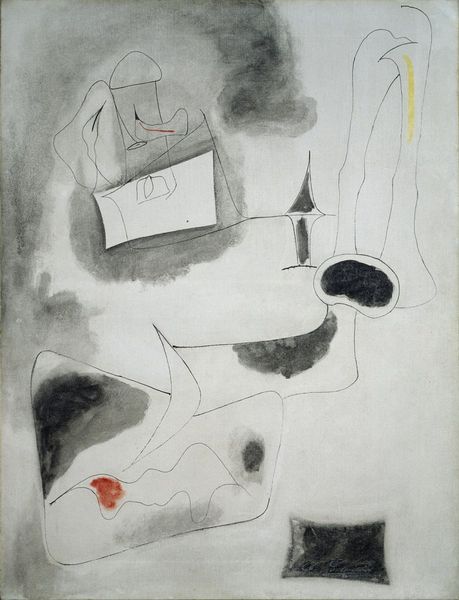
watercolor
#
water colours
#
figuration
#
abstract
#
watercolor
#
expressionism
#
abstraction
#
watercolor
Copyright: Public Domain: Artvee
Editor: Wassily Kandinsky's "Paradies", created in 1911, employs watercolor to portray an abstract scene. It feels dreamlike, almost as if glimpsed through a distorted lens. How do you interpret this work, particularly considering the historical context surrounding its creation? Curator: Looking at "Paradies," I see Kandinsky grappling with the anxieties and utopian ideals of pre-war Europe. The seemingly idyllic title contrasts with the turbulent composition, hinting at a paradise that is perhaps lost or unattainable. Notice how the gestural marks and vibrant colors, though aesthetically pleasing, also convey a sense of unease. What do you make of the fragmented figures? Editor: They seem displaced, almost floating within the landscape rather than belonging to it. Curator: Precisely! This displacement reflects the era's questioning of traditional social structures and artistic conventions. Expressionism, in which Kandinsky played a large role, acted as a form of social protest by rejecting established artistic norms and societal expectations, offering emotional authenticity over conventional representation. "Paradies" uses figuration and abstraction as a rebellion against conservative academic constraints, mirroring similar defiance of traditional authorities during that era. Does understanding that impact your feelings regarding the work's mood? Editor: It definitely adds another layer. Knowing that Kandinsky wasn't just exploring abstraction but actively participating in a broader cultural shift gives the painting a sense of urgency. It's not just a dream; it’s a response to the world around him. Curator: And a challenge to the viewer. Kandinsky demands that we actively participate in constructing meaning, much like the social reformers of his time sought to reconstruct society. Considering this, what might the very act of viewing "Paradies" represent from a cultural and social standpoint? Editor: Perhaps embracing change and questioning the status quo, which is definitely something I hadn’t thought of initially. This really makes me appreciate the power of art as a social commentary. Curator: Exactly! It’s a visual manifesto, urging us toward new ways of seeing and being.
Comments
No comments
Be the first to comment and join the conversation on the ultimate creative platform.

